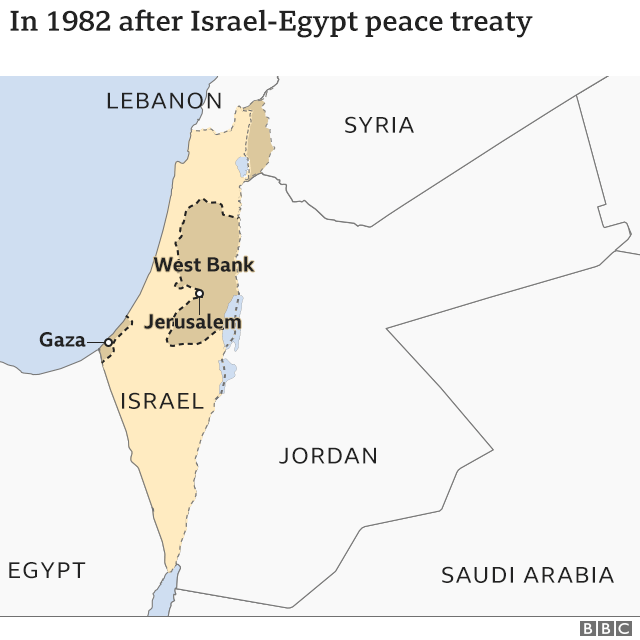More than 70 years after
Israel declared statehood, its borders are yet to be entirely
settled. Wars, treaties and occupation mean the shape of the Jewish
state has changed over time, and in parts is still undefined.
Here is a series of maps
explaining why.


The land which would become Israel was for centuries part of the
Turkish-ruled Ottoman Empire. After World War One and the collapse
of the empire, territory known as Palestine - the portion of which
west of the River Jordan was also known as the land of Israel by
Jews - was marked out and assigned to Britain to administer by the
victorious allied powers (soon after endorsed by the League of
Nations). The terms of the mandate entrusted Britain with
establishing in Palestine "a national home for the Jewish
people", so long as doing so did not prejudice the civil and
religious rights of non-Jewish communities there.



The rise of Palestinian Arab nationalism coupled with the rapid
growth of Palestine's smaller Jewish population - especially after
the advent of Nazism in the 1930s - saw an escalation in Arab-Jewish
violence in Palestine. Britain handed the problem to the United
Nations, which in 1947 proposed partitioning Palestine into two
states - one Jewish, one Arab - with the Jerusalem-Bethlehem area to
become an international city. The plan was accepted by Palestine's
Jewish leadership but rejected by Arab leaders.



The Jewish leadership in Palestine declared the establishment of the
State of Israel on 14 May 1948, the moment the British mandate
terminated, though without announcing its borders. The following day
Israel was invaded by five Arab armies, marking the start of
Israel's War of Independence. The fighting ended in 1949 with a
series of ceasefires, producing armistice lines along Israel's
frontiers with neighbouring states, and creating the boundaries of
what became known as the Gaza Strip (occupied by Egypt) and East
Jerusalem and the West Bank (occupied by Jordan). The surrounding
Arab states refused to recognise Israel, meaning its borders
remained unset.



The biggest change to Israel's frontiers came in 1967, when the
conflict known as the Six Day War left Israel in occupation of the
Sinai peninsula, the Gaza Strip, the West Bank, East Jerusalem and
most of the Syrian Golan Heights - effectively tripling the size of
territory under Israel's control. Israel effectively annexed East
Jerusalem - claiming the whole of the city as its capital - and the
Golan Heights. These moves were not recognised by the international
community, until the US changed its official position on the matter
under the Trump administration, becoming the first major power to do
so. Overwhelmingly, international opinion continues to consider East
Jerusalem and the Golan Heights as occupied territory.



One of Israel's land borders was formalised for the first time in
1979, when Egypt became the first Arab country to recognise the
Jewish state. Under the treaty, Israel's border with Egypt was set
and Israel withdrew all its forces and settlers from the Sinai, a
process which was completed in 1982. That left Israel in occupation
of the Gaza Strip, East Jerusalem and the Golan Heights, with its
frontiers (excluding that of Egypt) still delineated by the 1949
armistice lines.



In 1994, Jordan became the second Arab state to recognise Israel,
formalising its long border with the Jewish state in the process.
While there has not yet been a peace treaty between Israel and
Lebanon, the two countries' 1949 armistice line serves as Israel's
de facto northern border, while Israel's border with Syria remains
unsettled.
Similarly, Israel has had a de facto border with Gaza since it
pulled its troops and settlers out in 2005, but Gaza and the West
Bank are considered a single occupied entity by the UN, and the
official borders have not yet been determined. The final status and
contours of the West Bank, Gaza and East Jerusalem are meant to be
decided in negotiations between Israel and the Palestinians living
there under Israeli occupation, but decades of on-off talks have so
far proved fruitless.
https://www.bbc.com/news/world-middle-east-54116567
09/21/2020 06:45 AM